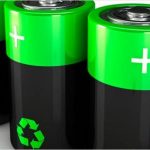
Scientists harvest first crop of vegetables grown without sunlight, soil, or pesticides in Antarctica
Saturday, June 02, 2018 by David Williams
http://www.futuresciencenews.com/2018-06-02-scientists-harvest-first-crop-of-vegetables-grown-without-sunlight-soil-or-pesticides-in-antarctica.html

If future plans to colonize the moon or other planets in the solar system are ever going to become successful, there needs to be a tried and tested way of planting crops and harvesting them without any issues. That’s part of the reason why the EDEN-ISS greenhouse container was put together and then shipped off to the Ekström ice shelf in the Antarctic: To figure out it if would be suitable for the purpose of growing crops of certain vegetables. Now, the scientists in charge of it have announced that they were finally able to make their first harvest.
Indeed, the scientists that are handling the Antarctic greenhouse have announced that, for the first time ever, they were successfully able to grow and later harvest the first crop of vegetables in the region – without the use of either soil or sunlight. Their successful method is seen as a possible blueprint for planting and harvesting techniques that could be useful for future space and space colonization missions.
It is said that at the Neumeyer-Station III, some 3.6 kg of salad greens were harvested by researchers, along with 18 cucumbers as well as 70 radishes. For researchers, who often have no choice but to go for months without any fresh produce, the harvest was seen as a welcome change.
According to Bernhard Gropp, the successful harvest is a treat that reminds them of the normal planting and harvesting methods under normal conditions outside of Antarctica. “It was special to have the first fresh salad of the Antarctic,” he said. “It tasted as if we had harvested it fresh in the garden.” (Related: Discover the doomsday seed vault’s secrets.)
Despite facing setbacks such as minor system failure on a few occasions and the strongest storm of the year, the Antarctic greenhouse stood strong and was able to deliver the desired results. According to Daniel Schubert, the project lead, the successful harvest just “shows that the Antarctic is an ideal test field for research.”
It is said that the vegetables harvested were all grown without any soil, sunlight, or pesticides, in what can only be described as a fully self-sufficient greenhouse container. Outside, temperatures routinely dropped to lower than -20 degrees Celsius or -4 degrees Fahrenheit, but the structure was designed to withstand such extreme conditions for crops.
In order to function as well as it did, the Neumeyer-Station III used state-of-the-art internals, which included built-in pipes that supplied a sufficient amount of water, indoor lamps that provide just the right amount of light, and of course, filters and nozzles that provide just the right mix of air to stimulate growth. There were large water tanks installed in the floor of it and filled with melted, filtered, and purified ice, with water being added to a “special nutrient solution” that gets sprayed on the plants every five to 10 minutes automatically in a process called aeroponics.
There were reportedly bottles of carbon dioxide that were shipped along with the container as well, which were meant to provide the plants with the air that they needed. The air gets filtered through a UV (ultraviolet) radiation system that is similar to the closed-circuit system that can also be found on the International Space Station.
Based on the success of their experiments, the researchers are now looking into possible real world applications for their methods. After all, if the crop-planting methods are deemed good enough to work on other planets, then they’ll probably be good enough to work here on Earth as well. And there are many places outside of Antarctica where they could be quite useful.
Learn more about innovative planting techniques at Harvest.news.
Sources include:
Tagged Under: Tags: aeroponics, agriculture, Antarctic, crops, farming, fresh produce, greenhouse, harvesting, International Space Station, ISS, Leafy greens, planting methods, Plants, salad greens, science, Space, space colony, Space Mission, vegetable crops, vegetables





